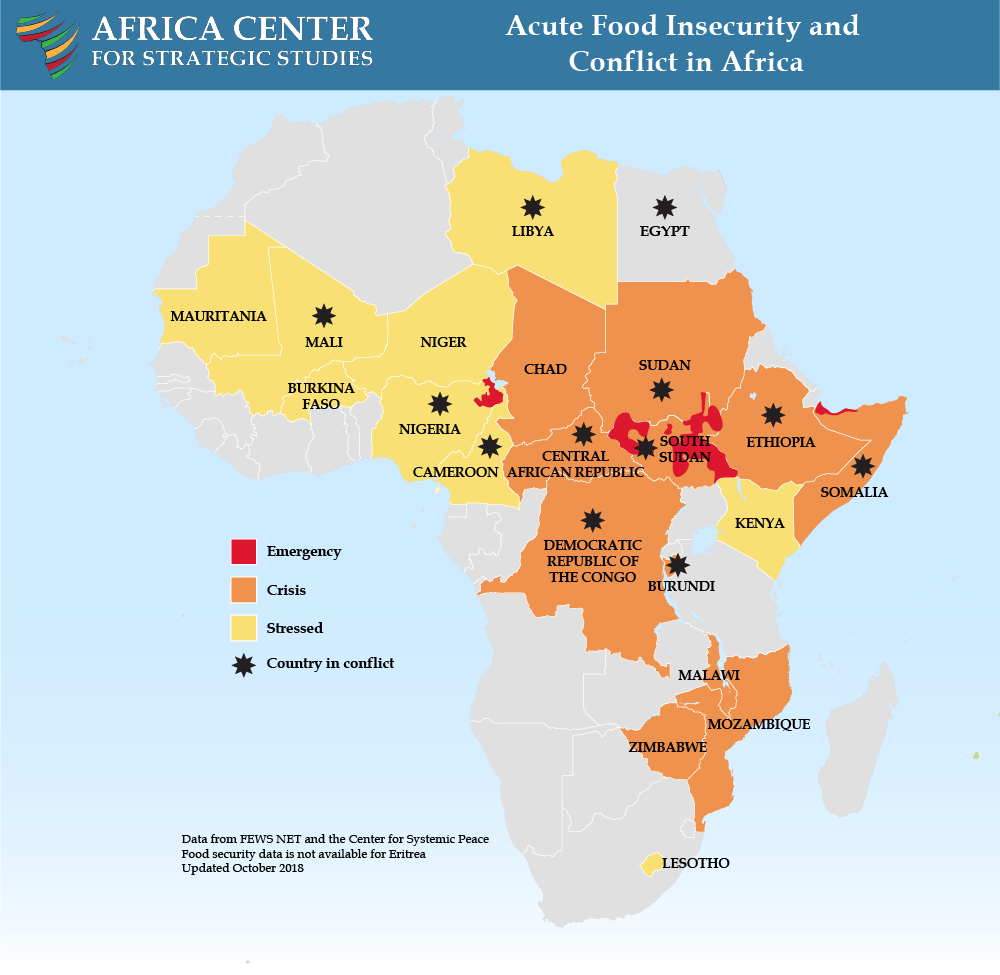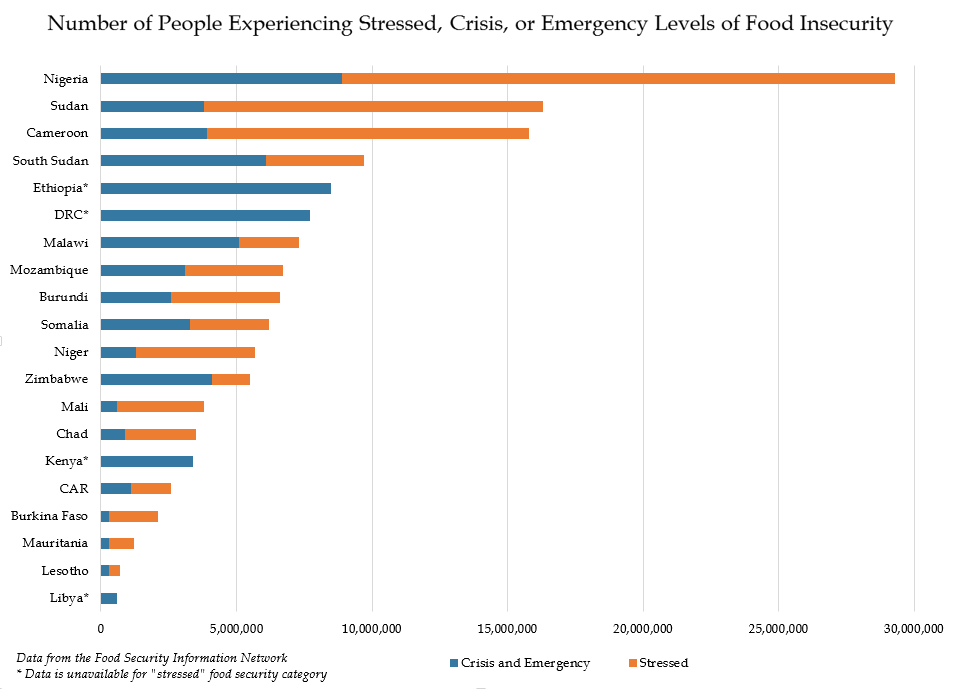 Click for printable PDF version
Click for printable PDF version
Conflict in Africa continues to be a major contributor to the continent’s food security challenges. Ongoing violence disrupts farming, livelihoods, and market functions, weakening household resilience to drought and other pressures. Conflict also restricts movement, preventing some communities from accessing humanitarian assistance. An assessment of Africa’s areas of acute food insecurity reveals these findings:
- Three quarters of Africans experiencing stressed, crisis, or emergency levels of food insecurity—more than 107 million out of 143 million total—live in conflict-affected countries.
- Eleven of the 12 African countries in conflict are experiencing acute food insecurity.
- Emergency levels of food insecurity in large parts of South Sudan and northeastern Nigeria are nearly entirely a result of the disruptions caused by conflict.
- More than half of the population in four African countries (South Sudan, Cameroon, Burundi, and the Central African Republic) are experiencing acute food insecurity. All are facing conflict. In South Sudan, nearly 80 percent of the population is acutely food insecure.
- More than 15 million citizens in 3 African countries (Nigeria, Sudan, and Cameroon) are facing acute food insecurity. Each of these countries is experiencing conflict.
- Unresolved African conflicts tend to amplify food security crises over time. Conflicts in the 4 countries experiencing stressed levels of food security have been ongoing for 5.5 years on average. In contrast, conflicts in the 7 countries facing crisis or emergency food security conditions have persisted for 14.7 years on average.
- Thirty-one humanitarian workers were killed in Africa—including 11 in South Sudan alone—between January and June 2018. Fifty-four were kidnapped, and forty were arrested.
Africa Center Experts
- Joseph Siegle, Director of Research
- Luka Kuol, Professor of Practice for Security Studies
Additional Resources
- Luka Kuol, “At the Root of Exodus: Food Security, Conflict, and International Migration,” World Food Program, 2017.
- Africa Center for Strategic Studies, “Humanitarian Costs of South Sudan Conflict Continue to Escalate,” Spotlight, January 29, 2018.
More on: Food Security



